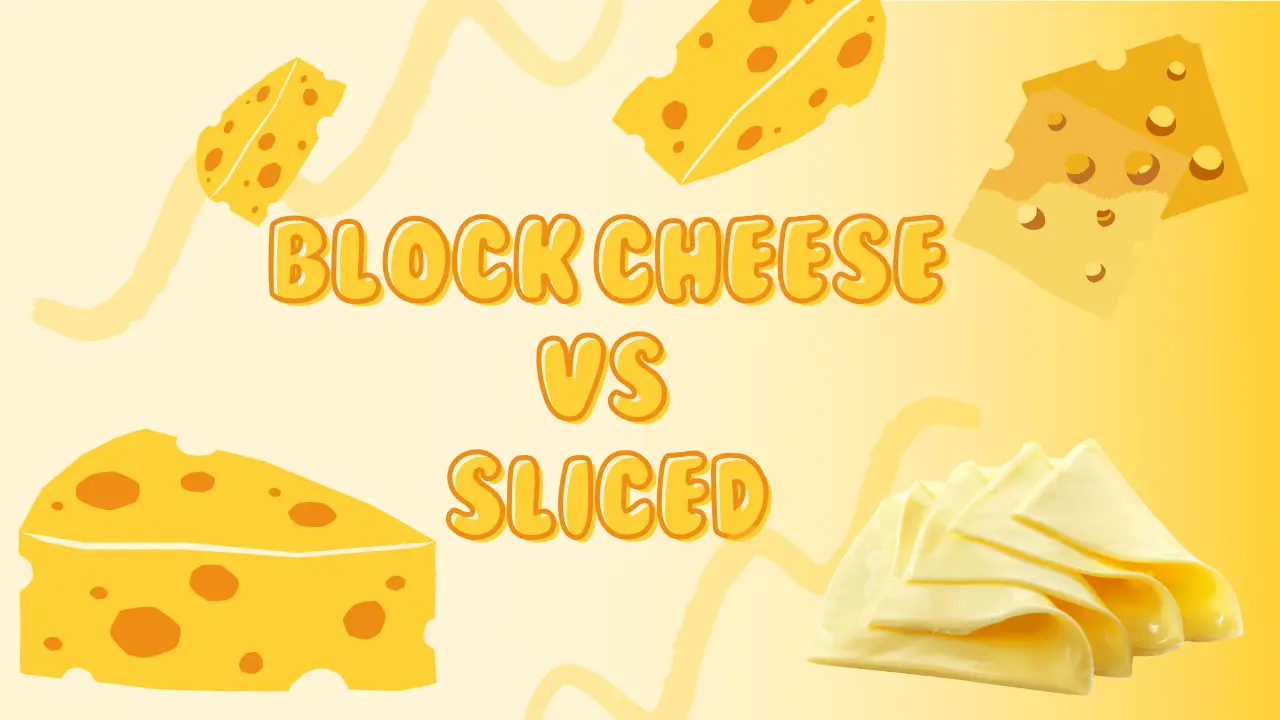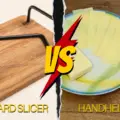Direct answer:
Cheese cubes are small, cut pieces of cheese often for snacking and used in dishes requiring quick melting, while cheese slices are thin, flat pieces of cheese typically used in sandwiches or for melting over foods.
Cheese is a versatile dairy product that can be presented in various forms to suit different culinary purposes. Two popular formats are cheese cubes and cheese slices. Cheese cubes are small, chunky pieces of cheese, which are great for snacking, in salads, or in cooking, particularly when quick melting is required. On the other hand, cheese slices are thin and flat, usually uniform in size, and are the go-to choice for sandwiches, burgers, or topping dishes that require a melted cheese layer. The choice between cubes and slices often comes down to the intended use and personal preference.
What Are Cheese Cubes?
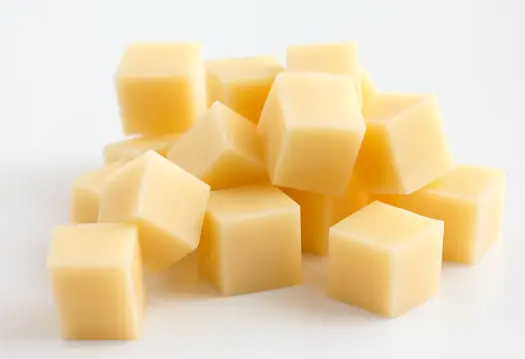
Cheese cubes are exactly what they sound like cubes of cheese. These are small, often square-shaped pieces of cheese cut from larger blocks. They’re perfect for serving as an appetizer, snack, or as a part of a cheese board, and are also a great addition to a variety of dishes, including salads and gourmet recipes. Cheese cubes can be made from all sorts of cheese varieties, from Cheddar to Gouda, allowing for an array of flavors and textures. They’re a versatile and convenient way to enjoy cheese in perfectly portioned bites.
What Are Cheese Slices?
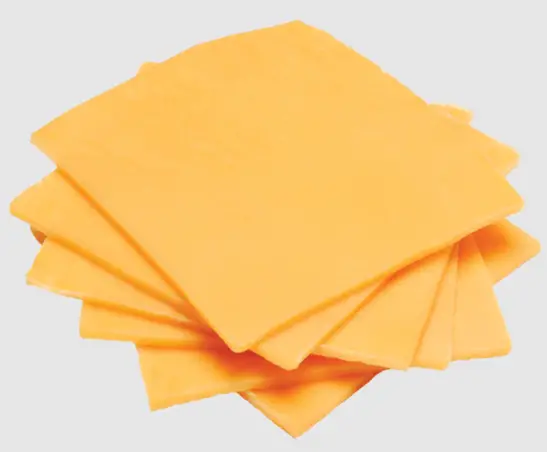
Cheese slices, a staple in many households, are thin, pre-cut pieces of cheese that are crafted for ease of use and convenience. Made from a variety of cheese types, including cheddar, swiss, and American, these slices are usually uniform in size and flexible in nature, allowing them to be easily layered on sandwiches, melted on burgers, or folded into other dishes. Cheese slices are not only time savers, but they also help ensure consistency in flavor and texture, mainly when used in cooking or baking.
Cheese Cubes vs Cheese Slices: An In-Depth Comparison
Uses:
Cheese cubes are often used as appetizers, salads, or as a part of cheese platters. They’re also perfect for snacking or cooking gourmet recipes. Cheese slices, however, are frequently used in sandwiches, burgers, or melted over dishes due to their uniform size and smooth melting quality.
Type of Milk Used:
Both cheese cubes and slices can be made from various types of milk, including cow, goat, and sheep milk, depending on the specific variety of cheese.
Types Available in the Market:
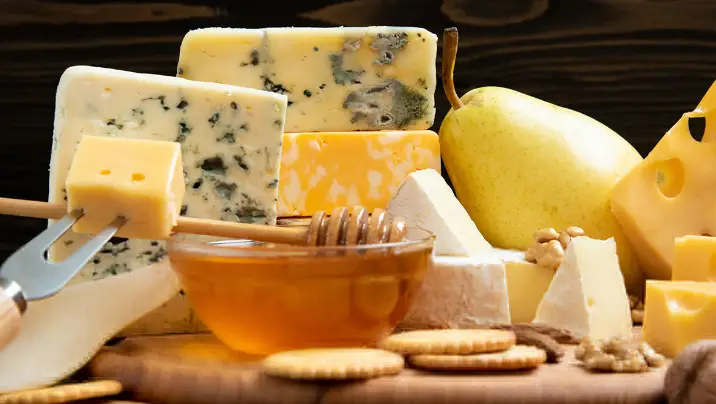
Common Cheese Types
The market offers an extensive range of both cheese cubes and slices. Common cheese types include cheddar, swiss, mozzarella, gouda, and Colby jack.
Substitutes:
In the absence of cheese cubes, you could use cheese sticks or chunks. For cheese slices, possible substitutes include cheese spreads or even thinly sliced blocks of cheese.
Butterfat & Culture (Type of Bacteria):
Butterfat content and the types of bacteria used in the culture can vary between different types of cheese. For instance, cheddar, a cheese commonly used in both cubes and slices, generally has a high butterfat content and is made with mesophilic bacterial cultures.
Nutritional Facts:
Both cheese cubes and slices contain similar nutrients – protein, calcium, and certain vitamins. However, specifics can vary depending on the type of cheese and whether it’s processed or natural.
Price:
Prices vary based on the type and brand of cheese. However, pre-cut cheese slices are typically slightly more expensive due to their convenience.
Taste, Texture, and Appearance:
The taste and texture of both cubes and slices will depend on the type of cheese. Cubes are usually firm and have a rich taste, while slices are softer, easier to melt, and have a uniform flavor.
Melting Time:
Due to their thinness, cheese slices melt quickly and evenly. Cheese cubes take a bit longer to melt due to their larger size.
Ease of Use, Versatility, and Convenience:
Both cubes and slices are user-friendly and versatile. However, slices offer unparalleled convenience for sandwiches and burgers, while cubes are excellent for salads, snacking, and cooking.
Shape:
As the names suggest, cheese cubes are typically square-shaped, and cheese slices are flat and thin.
Preservatives and Additives:
Natural cheese cubes and slices contain fewer preservatives and additives. However, processed cheese, whether in cubes or slices, often contains preservatives to enhance shelf life.
Impact on Dishes:
Cheese cubes add a fun textural element to dishes and are perfect for enhancing flavor in recipes where cheese is a star ingredient. Conversely, slices are fantastic for achieving a uniform cheese layer and a smooth, creamy texture when melted.
Is Cube Cheese Processed Cheese?
No, cube cheese is not necessarily processed cheese. While processed cheese can certainly be cut into cubes, so can natural cheeses. Cheese cubes can be made from all types of cheese, ranging from cheddar to mozzarella to gouda and beyond. It’s important to check the label if you’re specifically looking for natural cheese, as the type of cheese isn’t determined by the shape it’s cut into, but rather by its ingredients and the process by which it was made.
What Are Different Types Of Cheese Cubes?
Cheese cubes can be made from a wide variety of cheeses, providing an array of flavors, textures, and culinary uses. Here are a few types you might encounter:
- Cheddar Cubes: Known for their robust flavor, cheddar cubes are perfect for a flavorful snack or to add a bit of piquancy to a salad or dish.
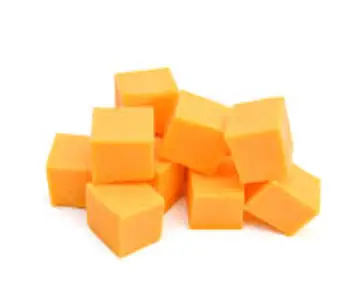
Cheddar Cheese Cubes - Swiss Cubes: Swiss cubes offer a mild, nutty flavor that’s excellent on a cheese board or in a fondue.
- Colby Jack Cubes: A mix of Colby and Monterey Jack cheeses, these cubes are mild and creamy, making them a crowd-pleasing choice for snacks and salads.
- Pepper Jack Cubes: Spiced with sweet peppers, rosemary, and habanero chilies, these cubes add a kick to any dish and are a favorite in Mexican cuisine.
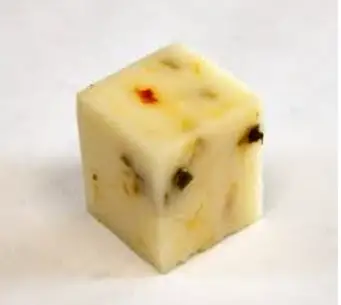
Pepper Jack Cheese Cube - Mozzarella Cubes: Soft and mild, mozzarella cubes are excellent in Italian recipes, especially in dishes like Caprese salads or lasagna.
- Gouda Cubes: Gouda cubes are creamy and slightly sweet, making them perfect for a sophisticated snack or cheese board.
- Havarti Cubes: Havarti cubes are creamy with tiny holes throughout the cheese. They’re a versatile option for both snacking and cooking.
FAQs
How many cheese cubes are in one oz?
Generally, there are about 3-4 cheese cubes in one oz, but this can vary depending on the size of the cube.
How long can cheese cubes and cheese slices be stored in the refrigerator?
Both cheese cubes and slices can be stored in the refrigerator for up to 2 weeks once opened. Unopened packages can last up to a few months if stored properly.
How should cheese be stored?
Cheese should be stored in the refrigerator, wrapped in parchment or wax paper, and then loosely wrapped in plastic to allow it to breathe.
Is it safe to eat moldy cheese?
For hard cheeses, you can cut off the moldy part and eat the rest. However, for soft cheeses, if mold appears, it’s safer to discard the entire piece as the mold could have penetrated throughout.
Why does some cheese have holes?
The holes in cheese, such as Swiss cheese, are created by bacteria that produce carbon dioxide gas as part of the fermentation process. The gas forms bubbles, resulting in holes or “eyes” in the cheese.
Conclusion
Choosing between cheese cubes and cheese slices is like picking between two flavors of a delectable dessert – both have their unique merits and choosing one largely depends on the specific culinary needs and personal preferences. Cheese slices, with their convenience and easy-melting nature, have become a staple in sandwiches, burgers, and other similar dishes. On the other hand, the versatility of cheese cubes allows them to shine in salads, gourmet recipes, or simply as a flavorful snack.
| Cheese Cubes | Cheese Slices | |
|---|---|---|
| Pros | Great for snacking, salads, and cooking | Perfect for sandwiches and burgers |
| Variety of flavors based on cheese type | Easy to melt | |
| Portion-controlled bites | Uniform size and texture | |
| Cons | May take longer to melt | Less ideal for dishes requiring cubed cheese |
| Might be less convenient for sandwiches | Might not offer as diverse a texture | |
| Similarities | Can be made from various types of cheese | Can be made from various types of cheese |
| Contains similar nutritional value | Contains similar nutritional value | |
| Both can be used in cooking and baking | Both can be used in cooking and baking | |
| Differences | Comes in bite-sized, cubed portions | Comes in thin, flat slices |
| Best suited for dishes needing cubed cheese | Best suited for dishes needing melted cheese | |
| Generally needs cutting from larger blocks | Often available pre-sliced for convenience |

Mario Batali is a renowned author, food enthusiast, and passionate chef who has dedicated his life to exploring the world of culinary arts. With a love for sharing his knowledge and experiences, Mario has become a prominent figure in the food blogging community, inspiring countless readers with his creativity and expertise.
In addition to his culinary prowess, Mario Batali is also a talented writer with a flair for engaging storytelling. He launched his own food blog to share his recipes, cooking tips, and personal experiences in the kitchen. Over time, Mario’s blog gained a loyal following of food enthusiasts who appreciate his unique approach to cooking and his dedication to using only the finest ingredients.
Mario Batali’s passion for food and his commitment to sharing his knowledge with others have made him a true inspiration in the world of culinary arts. Through his blog, cookbooks, and public appearances, Mario continues to spread his love of food and the joy of cooking with his ever-growing fanbase.

